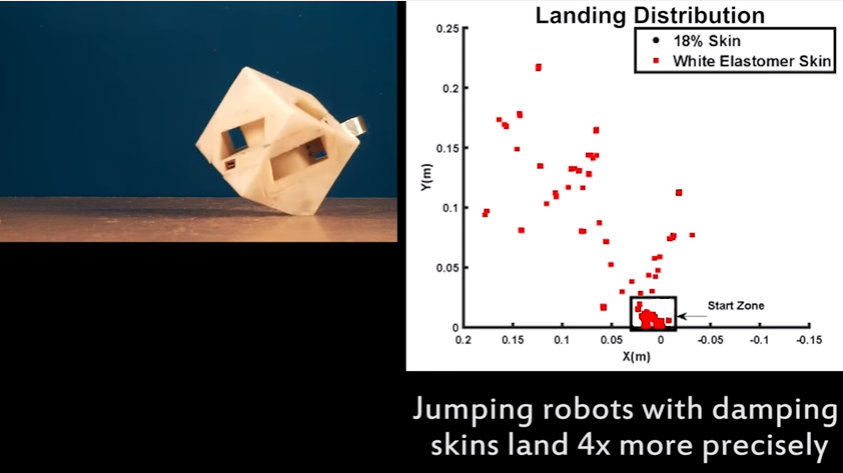 Robots and the field of robotics itself definitely serve a number of elevated purposes, far beyond what many of us simple folk crave, dreaming of a home assistant that never complains and does all the cooking, dishing, dusting, and beyond. We’ve waited decades to see robotics really kick off in the mainstream, and indeed it has been slow, but 3D printing has certainly been a boon to its progress as it allows for greater affordability in creating components and self-sustainability at any level in fabrication, customization, and speed in production.
Robots and the field of robotics itself definitely serve a number of elevated purposes, far beyond what many of us simple folk crave, dreaming of a home assistant that never complains and does all the cooking, dishing, dusting, and beyond. We’ve waited decades to see robotics really kick off in the mainstream, and indeed it has been slow, but 3D printing has certainly been a boon to its progress as it allows for greater affordability in creating components and self-sustainability at any level in fabrication, customization, and speed in production.
Researchers at MIT’s Computer Science and Artificial Intelligence Laboratory (CSAIL) are now using 3D printing technology to refine robotics further in one of those ‘how come no one thought of this already?’ instances as they offer hardcore robots some of the extra padding they’ve probably been craving all these years, unbeknownst to us. Using a new technique, the research team has created an altogether softer material that can be used in a wide range of applications, and may soon offer the potential to eliminate a lot of damage, from robots breaking to drones crashing and crumpling.
The CSAIL team sees their new materials being suitable for items like smartphones (yes, please!), helmets, shoes, and the list goes on. Their findings have been outlined in a paper, ‘Printable Programmable Viscoelastic Materials for Robots,’ authored by Robert MacCurdy, Jeffrey Lipton, Shuguang Li, and Daniela Rus.
The idea is that by employing ‘programmable viscoelastic materials’ (PVMs), users will be able to create a 3D printed part for a bot (or other applications), specifying exactly how rigid or flexible they prefer it to be, depending on the job it will perform. The whole idea behind this material is protection. If a small machine or device falls or bounces, it should have the proper padding to keep it from malfunctioning or falling apart altogether. Functioning as a shock-absorbing skin, a robot, for example that moves primarily in a bouncing motion can be protected—using only 1/250 the amount of energy it transfers to the ground. 3D printed robots can then, according to the researchers, land four times more accurately.
“That reduction makes all the difference for preventing a rotor from breaking off of a drone or a sensor from cracking when it hits the floor,” says CSAIL Director Daniela Rus, project leader. “These materials allow us to 3D print robots with visco-elastic properties that can be inputted by the user at print-time as part of the fabrication process.”
Obviously, one of the first applications that will come to mind is the latest use of drones—whether they are delivering pizza or working for Amazon or Google. These new materials act as a shock absorber which would seem to be a requirement for electronics that are constantly taking off and landing.
PVMs are also highly suited for fabricating dampers, meant to control and stabilize items, from car tires to offering protection for larger structures like radio towers during bad storms.
“Viscoelastic materials are widely used as dampers because they are simple, compact, inexpensive, and widely available; most natural rubbers are viscoelastic,” explain the researchers in their paper. “As bulk materials, they can be shaped into the desired net geometry by conventional methods (casting, cutting/stamping, extruding, heat-forming, molding etc).”
“However, this simplicity comes at a cost. The tooling required to create the desired geometry can be time consuming to setup, and the materials have isotropic material properties; if regions with varying stiffness or damping are desired, they must be implemented with physically different pieces of material, placed adjacent to each other. Additive manufacturing (3D printing) provides a means to overcome these limitations.”
With the ability to 3D print with different materials possessing different properties, the research team states that with the proper programming, different ‘regions’ of a part can each have a different programmed texture, allowing for different and appropriate mechanics. This leads to the ultimate functionality.
“It’s hard to customize soft objects using existing fabrication methods, since you need to do injection molding or some other industrial process,” says Lipton. “3D printing opens up more possibilities and lets us ask the question, ‘can we make things we couldn’t make before?’”
In answer, they used a standard 3D printer and TangoBlack+ to create their example robotic cube and its protective skins. While the researchers do see the use of this materials as one that would be of great avail to numerous applications, they see many just within the realm of robotics.
“For example, this technique could make it possible to design grippers with printable PVM layers that minimize the transmitted vibrations from the end-effector to the arm, reducing actuator wear and control effort to maintain position. Customized impact protecting skins/pads based on PVMs could allow robots to be more resilient to impacts, to be more accurate when landing, and to reduce controller complexity and effort,” concluded the research team.
And while the material offers exceptional vibration damping properties for robots, it should also work well in other items like cameras or electronics which need protection from vibration, whether it’s emanating from movement, or a motor. The cube robot was created with the following:
- A rigid body
- Four layers of looped metal serving as the springs for motion
- Two motors
- A microcontroller
- Battery
- Inertial measurement unit sensors
“By combining multiple materials to achieve properties that are outside the range of the base material, this work pushes the envelope of what’s possible to print,” says Hod Lipson, a professor of engineering at Columbia University and co-author of ‘Fabricated: The New World of 3D Printing.’ “On top of that, being able to do this in a single print-job raises the bar for additive manufacturing.”
Running shoes could also benefit from this materials and its shock-absorbing properties, as well as headgear typically used in sports. Sensitive parts will have greater longevity in electronics devices, and robots will be easier to control.
“In the future this material and process may find applications in a wide range of fields, including custom sporting gear, personal protective equipment, and vibration isolation in cameras or industrial equipment,” concluded the team in their paper.
The research team will be presenting their paper at next week’s IEEE/RSJ International Conference on Intelligent Robots and Systems in South Korea. See the video below for a brief demonstration of their work.
This work was supported by a grant from the National Science Foundation. Discuss further in the MiT New 3D Printing Materials forum over at 3DPB.com.
[Source: MIT News, provided to 3DPrint.com directly by Adam Conner-Simons]Subscribe to Our Email Newsletter
Stay up-to-date on all the latest news from the 3D printing industry and receive information and offers from third party vendors.
Print Services
Upload your 3D Models and get them printed quickly and efficiently.
You May Also Like
GKN Aerospace Adds Interspectral’s AM Explorer Software to its 3D Printing Workflow
GKN Aerospace, the UK-based leading manufacturer of aircraft components, has adopted AM Explorer, a platform made by Swedish software firm Interspectral, at its Centre of Excellence for Engine Systems in...
IC3D’s Next Chapter: Scaling Sustainability and Smarter Manufacturing in 2025
This article is part of a sponsored series highlighting America Makes’ member companies and their contribution to the additive manufacturing industry. 3DPrint.com is a proud member of America Makes. The...
Protolabs Brings in New CEO, Keeps Growth Plans on Track
A new CEO is stepping in at Protolabs (NYSE: PRLB). This week, the digital manufacturing company announced that Suresh Krishna is now its President and CEO. Krishna is stepping into...
Made-in-America Rugged 3D Printer Launched by Chicago Additive, Backed by NAVWAR
Chicago Additive, an end-to-end additive manufacturing (AM) solutions company based in Northwest Indiana, has announced the pre-launch of its AMOS 3D printer. This ruggedized FDM desktop printer was originally developed...
































